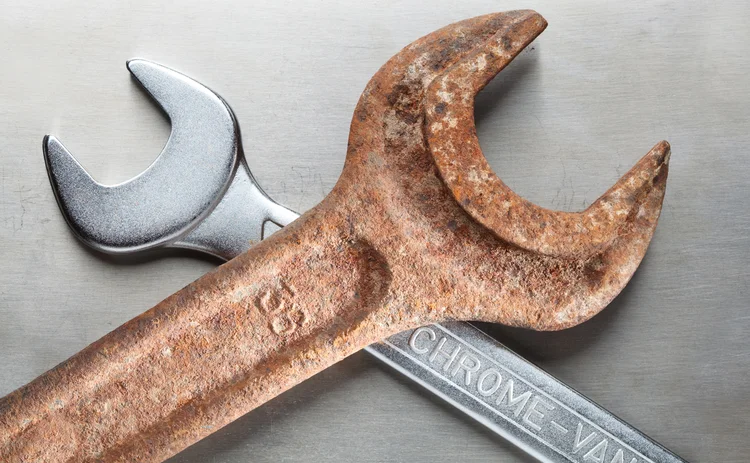Dash Plans Redesigned OEMS Release for Q4
Blaze 7 will feature an enhanced, integrated suite for options volatility traders.

Dash Financial Technologies will release its newly rebuilt front end, dubbed Blaze 7, in Q4 of this year, and it will feature a new volatility trading product suite.
Blaze Classic—or just Blaze, as the Street knows it—is an order execution management system (OEMS) in the options space inherited by Dash during its merger with LiquidPoint in 2017. Dash chief operating officer, Stino Milito, says the company has spent the last couple of years rebuilding the platform to modernize it, make it easier to use, and create a more lightweight deployment system.
The front-end overhaul will also package in a suite for options traders who trade on volatility. Some of those features are already available, albeit in a limited capacity, through the Blaze API, which provides a programmable interface delivering market data, trading algorithms, routing, and direct market access.
Volatility trading tools are “an area—and the only area if I’m being honest—that we haven’t competed in the options space, historically,” Milito says.
Last year, Dash launched its Vega Trader, in which an options trader can pre-set the amount of vega (the risk measure of an option’s sensitivity to price changes in its underlying asset) they want to buy in a given time period and on which strikes (fixed prices at which the option’s underlying security can be bought or sold). The Vega Trader algorithm takes the order and manages it for the trader, buying up the desired amount of vega over those strikes. Among other offerings that will be upgraded is support for delta-hedged orders. These, along with other new volatility tools, will be re-launched in a more cohesive package, Milito says.
The OEMS space has seen a fair amount of upset in recent years. Bloomberg left the arena when it shuttered its Sell-Side Execution and Order Management Solutions (SSEOMS) last year. London-based Fidessa saw an exodus of roughly a quarter of its global workforce, following its acquisition by Ion Group in 2018, the same year that State Street bought Charles River Development, which owned another major buy-side, front-end OMS. In 2017, it was speculated that Bloomberg’s Tradebook was also headed for the exit, though that hasn’t panned out. Today, other tech vendors like Itiviti are seeking to capitalize on exits and shifts by signing displaced or dismayed customers to its own platform.
Regardless of whether an OEMS is tailored for equities, options, fixed income, or otherwise, these seismic shifts happen, Milito says, because solely providing a front end—even a very good one—isn’t enough today. Providers must differentiate themselves and stake their claims by supporting middle- and back-end capabilities, as those are the ones that get deeply interwoven into the guts of trading firms.
“The back end is integrated so deeply into these buy-side firms—it’s doing their compliance; it’s doing their accounting—they’re never going to change,” the exec says. “It’s the front ends that don’t have the compliance and auditing and are not integrated into somebody’s back end—I don’t really know what the path forward for those companies is in this highly-regulated compliance environment we live in.”
While Dash does not support back-office accounting functions, it supports various compliance solutions for old and new regulations such as Consolidated Audit Trail and Rule 606 reporting.
In December 2018, Dash announced it had acquired eRoom Securities. Since the deal closed last year, the vendor has rebranded it Dash Prime, which acts as a prime broker that caters to professional options traders. The new division, along with Dash’s Sensor algorithmic trading suite, will also be a top focus for the company throughout the second half of 2020.
Further reading
Only users who have a paid subscription or are part of a corporate subscription are able to print or copy content.
To access these options, along with all other subscription benefits, please contact info@waterstechnology.com or view our subscription options here: http://subscriptions.waterstechnology.com/subscribe
You are currently unable to print this content. Please contact info@waterstechnology.com to find out more.
You are currently unable to copy this content. Please contact info@waterstechnology.com to find out more.
Copyright Infopro Digital Limited. All rights reserved.
As outlined in our terms and conditions, https://www.infopro-digital.com/terms-and-conditions/subscriptions/ (point 2.4), printing is limited to a single copy.
If you would like to purchase additional rights please email info@waterstechnology.com
Copyright Infopro Digital Limited. All rights reserved.
You may share this content using our article tools. As outlined in our terms and conditions, https://www.infopro-digital.com/terms-and-conditions/subscriptions/ (clause 2.4), an Authorised User may only make one copy of the materials for their own personal use. You must also comply with the restrictions in clause 2.5.
If you would like to purchase additional rights please email info@waterstechnology.com
More on Trading Tech
Recent volatility highlights tech’s vital role in fixed income pricing
MarketAxess’ Julien Alexandre discusses how cutting-edge technology is transforming pricing and execution in the fixed income market amid periodic bouts of volatility
Banks fret over vendor contracts as Dora deadline looms
Thousands of vendor contracts will need repapering to comply with EU’s new digital resilience rules
Where have all the exchange platform providers gone?
The IMD Wrap: Running an exchange is a profitable business. The margins on market data sales alone can be staggering. And since every exchange needs a reliable and efficient exchange technology stack, Max asks why more vendors aren’t diving into this space.
This Week: Trading Technologies completes ANS deal; State Street; Equinix; and more
A summary of the latest financial technology news.
Interactive Brokers looks beyond US borders for growth opportunities
As retail trading has grown in volume and importance, Interactive Brokers and others are expanding international offerings and marketing abroad.
JP Morgan’s goal of STP in loans materializes on Versana’s platform
The accomplishment highlights the budding digitization of private credit, though it’s still a long road ahead.
As data volumes explode, expect more outages
Waters Wrap: At least for those unprepared—though preparation is no easy task—says Anthony.
This Week: ICE Bonds and MarketAxess plan to connect liquidity networks, TS Imagine, Bloomberg, and more
A summary of the latest financial technology news.








